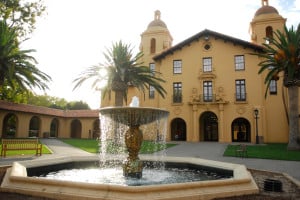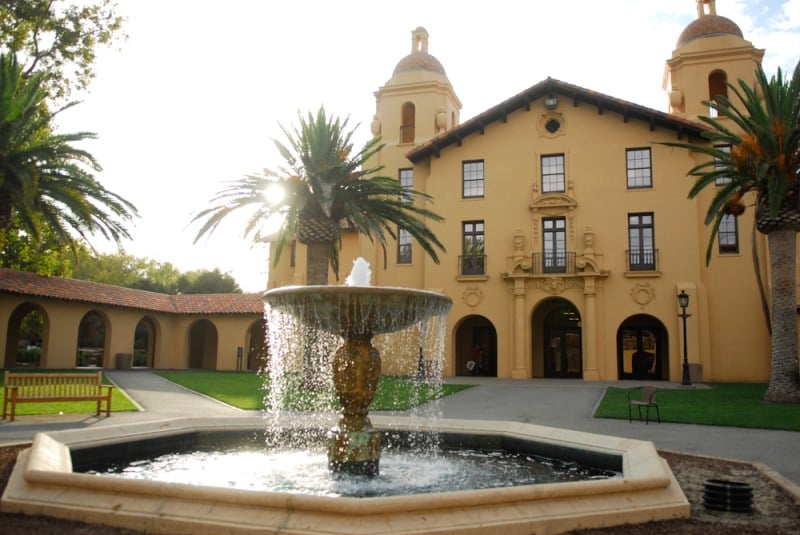
The University has recently launched a series of focus groups to gain feedback about the state of Stanford’s student unions. Despite the presence of external architects and members of Capital Planning at the first focus group session held on Oct. 12, University administrators maintain that there are currently no established plans for a new or renovated student union.
“We are just trying basically to reach out to students right now and see what they think of the existing campus center facilities,” said Zach Pozner, senior campus planner. “This is part of an ongoing effort to see if what’s there is sufficient for them, or if there are other things they’d like to see there.”
Discussion at the first focus group session, attended by a group of roughly 25 student leaders, revolved largely around identifying shortcomings with Old Union and Tresidder Union’s current offerings. Participants noted a lack of practice space, a shortage of electrical outlets and a desire for a more relaxed 24-hour study space than the one currently offered in Meyer Library.
“People were just going around, sharing ideas,” said Taylor Winfield ’13, a former ASSU chair of health and wellness and attendee of the meeting. “It seemed like they had collected a really representative group of students …We sort of built off of each other.”
All members of the focus group session received invitations to attend from Jeanette Smith-Laws, director of operations and student unions. When deciding which students to invite, Smith-Laws said she sought out recommendations from University administrators, looking for students who would be able to think about the needs of students outside of their own immediate groups.
She acknowledged, however, the need for broader feedback from the Stanford community moving forward. According to Smith-Laws, administrators will be sending out campus-wide surveys in the coming weeks and will be holding more focus group sessions.
“We want to hear from students who we might not necessarily hear from all the time,” Smith-Laws said. “We want to hear from a range of students with a broad range of interests.”
“We realize that this is just the starting point, but the tree keeps branching after that,” said David Geet ’12, who was recently hired by the Office of the Vice Provost of Student Affairs to help study student unions. Geet led the Oct. 12 focus group session.
Pozner downplayed the significance of the presence of a group of New York-based architects at the focus group, framing their participation as only complementary to student perspectives.
“Bringing in some additional expertise this time is not really out of the ordinary,” Pozner said.
According to Smith-Laws, the discussion group is way to explore the nature of an ideal student union on a campus where student unions have diminished in their significance as facilities have sprung up elsewhere. The focus groups coincided with the 50th anniversary of Tresidder Union, which originally incorporated an art gallery and bowling alley as well as student spaces.
Through the focus groups, Smith-Laws said the University is hoping to create a master plan for student spaces moving forward.
“We are trying to create a complete picture, so we can do phases,” Smith-Laws said. “We are trying to create that campus center that brings students together and out of their residences, [that students] really think is a student union.”
Focus group participants echoed Smith-Laws’s sentiments, expressing support for a campus social hub while also aiming to preserve well-received aspects of existing facilities.
“[Student unions spaces] can definitely be improved and be more inclusive for all student groups and student types,” said Rebecca Yanes ’15, a staff member at El Centro Chicano. “Making an all-inclusive student union doesn’t mean we don’t need community centers.”
“There’s no communal hub,” said ASSU President Robbie Zimbroff ’12. “I would love a place that — and this is the big thing lacking at Stanford and Palo Alto — you know is the place to watch the game.”
According to Zimbroff, the ASSU has yet to become involved in the process while it remains largely in its conceptual stage. He predicted that this would change if plans solidify.
“I do think that’s a place where the ASSU gets to have a say in what’s going on,” Zimbroff said. “Right now the gist of it was that they’re trying to see if that’s something that would even be useful.”
Smith-Laws said there is not currently any planned funding for renovation or construction purposes, but added that the focus groups and subsequent outreach could serve as a starting point for planning a new facility, pending funding and other considerations.
Kurt Chirbas contributed to this report.
